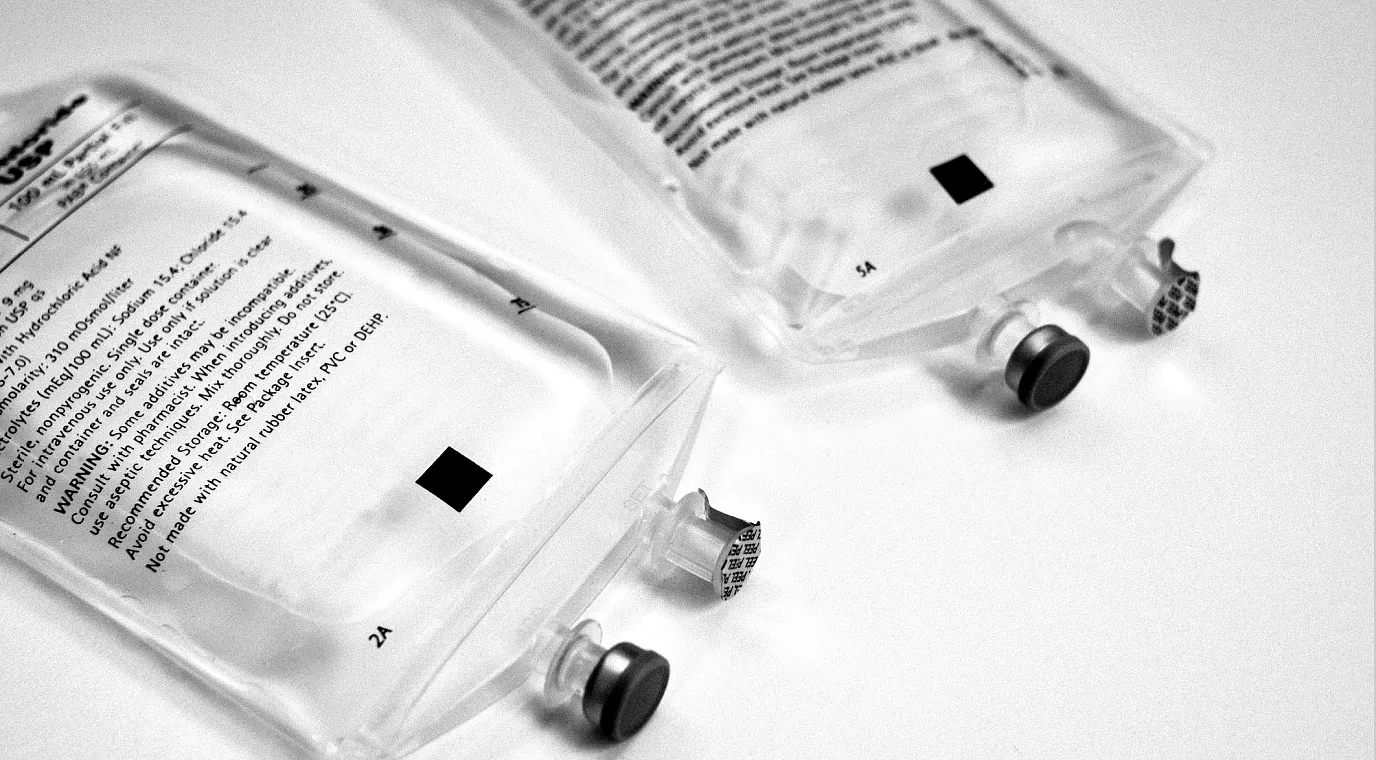
UNDERSTANDING THE ENVIRONMENTAL IMPACT OF DEHP
WHY SWITCHING TO NON-DEHP MATERIALS MATTERS
Advances in the healthcare industry can sometimes have an unexpected negative impact on the environment and the world around us.
Take the use of di-(2-ethylhexyl) phthalate (DEHP) in medical products. This compound, which is commonly found in IV bags and tubing, has raised concerns among scientists for decades.
WHAT IS DEHP?
DEHP is categorized as a chemical of concern and is commonly used in medical equipment to soften polyvinyl chloride (PVC).1 While it helps with the manufacturing process to make rigid plastic more flexible, exposure to DEHP has been linked with potentially serious health risks.1,2
• Non-biodegradability: DEHP does not readily degrade in the environment, increasing its potential for long-term exposure.3
• Bioaccumulation: As DEHP leaches into the environment, it can spread to many organisms, including aquatic wildlife and plants.3,4
• Toxicity: DEHP exposure has been shown to have many adverse effects, not only on animals but also on humans.5
HEALTH RISKS
DEHP can be particularly harmful to high-risk populations, including pregnant and lactating women,6 patients undergoing chemotherapy7 and pediatric patients.8 DEHP is an endocrine-disrupting chemical associated with potential adverse health effects, including cancers and reproductive disorders.1
A SHIFT TOWARD DEHP-FREE MATERIALS
It's crucial for healthcare professionals to continuously strive to provide the safest treatments for their patients and staff while also considering the environment. Choosing products not made with DEHP can help eliminate toxic chemicals that can potentially affect patients, staff and the world around us. Several professional organizations, including the American Medical Association, encourage hospitals and physicians to reduce and phase out the use of PVC medical device products, especially those containing DEHP.9
TAKE ACTION TODAY
As healthcare professionals with a responsibility for patients and the environment, consider the composition and potential impact of a product the next time you choose one for your facility. Request IV bags and tubing that do not contain DEHP to help create a safer and healthier planet for us all.
References: 1. Schettler T. Polyvinyl chloride in health care: a rationale for choosing alternatives. Health Care Without Harm. Published January 2020. Accessed April 1, 2025. https://us.noharm.org/media/4423/download?inline=1 2. Proposition 65 Warnings. Di(2-Ethylhexyl)Phthalate (DEHP). Official website of the State of California. Published 2021. Accessed April 1, 2025. https://www.p65warnings.ca.gov/fact-sheets/di2-ethylhexylphthalate-dehp 3. Agency for Toxic Substances and Disease Registry (ATSDR). ToxFAQs™ for Di(2-Ethylhexyl)Phthalate (DEHP). U.S. Centers for Disease Control and Prevention. Updated January 21, 2022. Accessed May 16, 2025. https://wwwn.cdc.gov/TSP/ToxFAQs/ToxFAQsDetails.aspxfaqid=377&toxid=65 4. Agency for Toxic Substances and Disease Registry. Toxicological profile for Di(2-Ethylhexyl)Phthalate. (DEHP). U.S. Centers for Disease Control and Prevention. Published January 2022. Accessed May 16, 2025. https://www.atsdr.cdc.gov/ToxProfiles/tp9-c5.pdf 5. Rowdhwal SSS, Chen J. Toxic effects of di-2-ethylhexyl phthalate: an overview. Biomed Res Int. 2018;2018:1750368. doi:10.1155/2018/1750368. 6. Sharpe RM, Skakkebaek NE. Testicular dysgenesis syndrome: mechanistic insights and potential new downstream effects. Fertil Steril. 2008;89(suppl 2):e33-e38. doi:10.1016/j.fertnstert.2007.12.026. 7. Center for Devices and Radiological Health. Safety assessment of Di(2 Ethylhexyl)Phthalate (DEHP) released from PVC medical devices. Health Care Without Harm. Published February 2, 2022. Accessed April 1, 2025. https://us.noharm.org/media/3878/download?inline=1 8. Hannas BR, Furr J, Lambright CS, et al. Dipentyl phthalate dosing during sexual differentiation disrupts fetal testis function and postnatal development of the male Sprague-Dawley rat with greater relative potency than other phthalates. Toxicol Sci. 2011;120(1):184-193. doi:10.1093/toxsci/kfq386. 9. American Medical Association. Encouraging alternatives to PVC/phthalate products in health. H-135.945. AMA Policy Finder. Accessed April 1, 2025. https://policysearch.ama-assn.org/policyfinder/detail/pvc?uri=%2FAMADoc%2FHOD.xml-0-316.xml